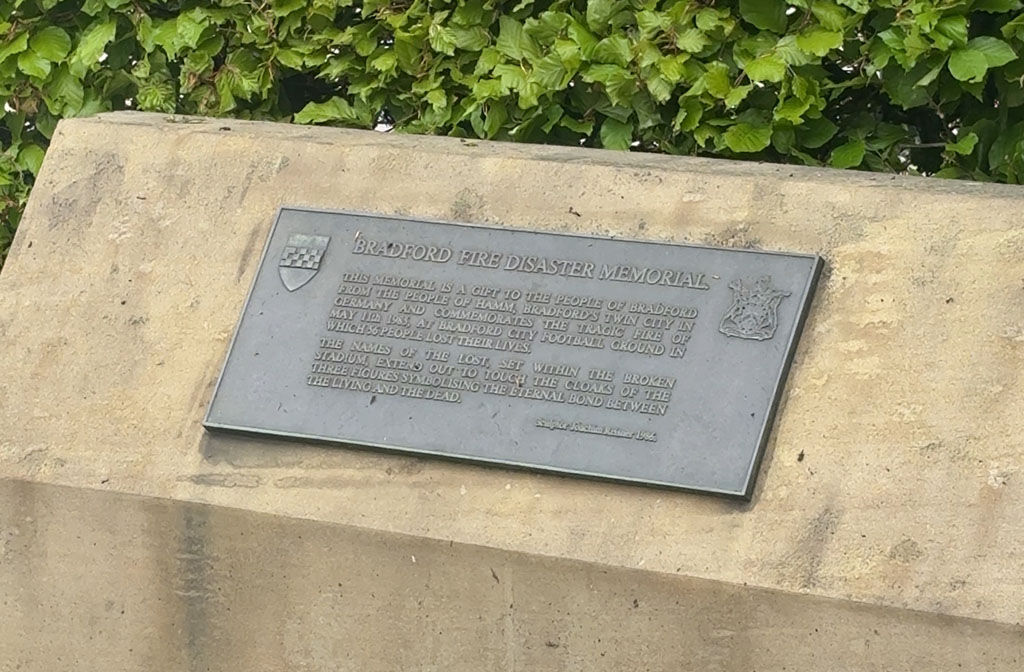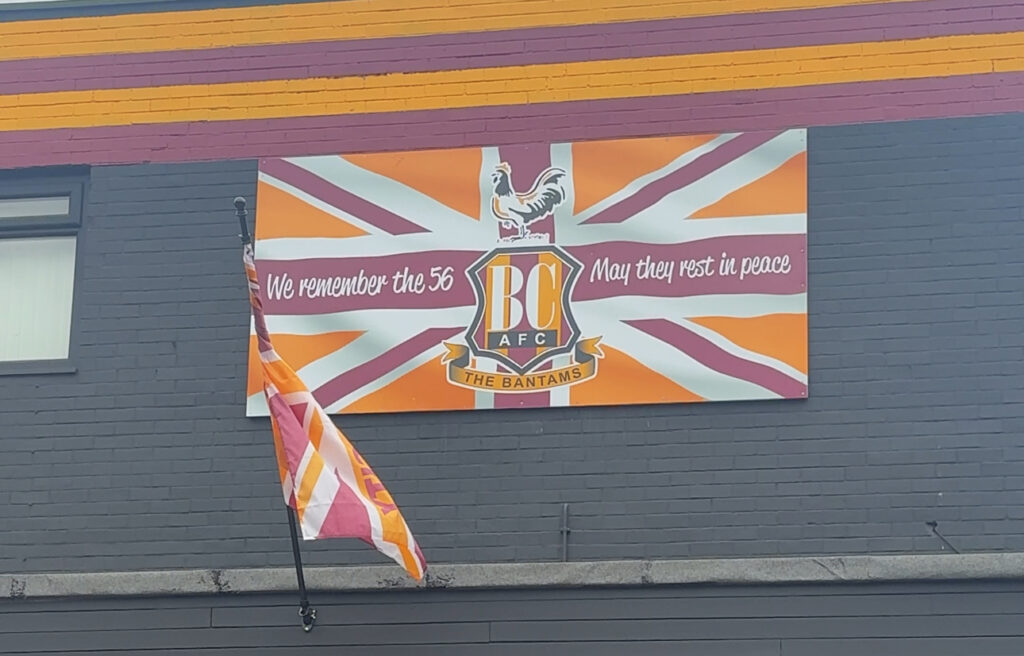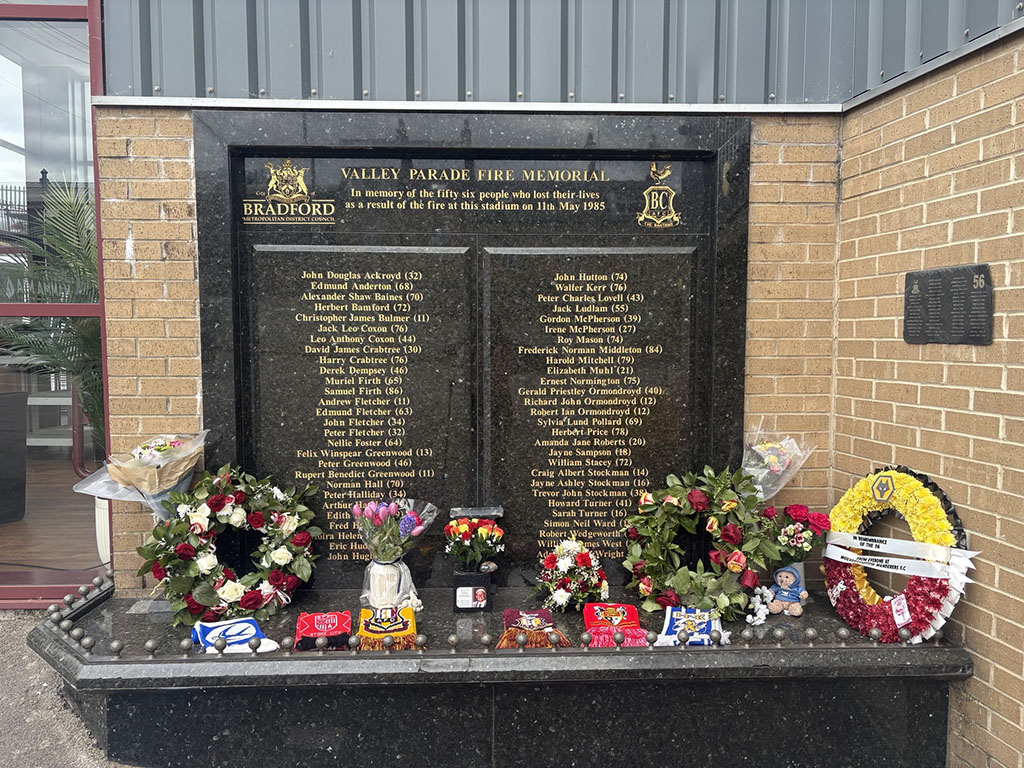This May marks the 40th anniversary of one of the darkest days in British football history—the Valley Parade fire. On 11 May 1985, during Bradford City’s final match of the season against Lincoln City, a devastating fire broke out in the main stand of Valley Parade, resulting in the tragic loss of 56 lives and leaving over 260 injured. As the city prepares to commemorate this somber milestone, the legacy of that day continues to shape Bradford’s identity and its commitment to safety and remembrance.
The Tragedy
The fire ignited during the 40th minute of the match, rapidly engulfing the wooden stand in flames. The cause was traced to a discarded cigarette that fell through the floorboards, igniting accumulated rubbish beneath. The stand, which had been slated for replacement due to safety concerns, had a wooden roof and inadequate emergency exits, contributing to the high casualty rate. The disaster led to the Popplewell Inquiry, which resulted in significant changes to stadium safety regulations across the UK.
At just 17 years old, Matthew Wildman endured one of the most harrowing experiences imaginable when he became caught in the catastrophic fire at Bradford City’s Valley Parade stadium. He was the final member of the public to escape the blaze alive, but not without suffering extensive and life-altering burns. Trampled in the panic and chaos at the rear of the stand, Matthew was hurled over a wall into a lower section of the main stand, surrounded by flames and peril. He was moments away from falling eight feet onto a concrete floor when, in an extraordinary act of courage, a fellow survivor David Sharpe, who had already reached safety, turned back and rescued him from the brink.
Since that fateful day, Matthew has dedicated his life to raising awareness and vital funds for the Plastic Surgery and Burns Research Unit in Bradford—the very place that pioneered the treatments which helped save and rebuild his life. “I must have had five different experiments carried out on me with all sorts of new techniques for skin grafts and I had potions injected into me that helped my face repair naturally over time,” he said. His ongoing commitment stands as a powerful testament to resilience, gratitude, and the enduring strength of the human spirit.
A City United in Grief and Action
In the aftermath, Bradford united in grief and action. Over £3.5 million was raised for victims and their families through the Bradford Disaster Appeal Fund. The club and city authorities worked tirelessly to rebuild Valley Parade, reopening it in December 1986 with a new, safer structure. Memorials were established both at the stadium and in Centenary Square, ensuring that the victims would not be forgotten.
Lasting Impact on Stadium Safety
The tragedy prompted a nationwide overhaul of stadium safety. The Popplewell Inquiry highlighted severe deficiencies, such as the use of untrained stewards and lack of proper fire-fighting equipment. In response, the government introduced stringent safety measures, including mandatory all-seater stadiums and improved emergency protocols, significantly enhancing fan safety at sports venues across the country.
A Community’s Ongoing Remembrance

Each year, Bradford pauses to remember the lives lost. The annual memorial service, held on 11 May, gathers survivors, families, and supporters at the Bradford City Fire Memorial in Centenary Square. These gatherings serve as a poignant reminder of the tragedy and the resilience of the community. In 2024, the Lord Mayor of Bradford noted the “lingering effects” of the disaster, emphasizing the importance of remembrance for those affected.
John Dewhirst, historical writer for Bradford football and Bradford City AFC in particular said that “the emphasis is not on the 56 deceased, in many ways it was the survivors who had to come to terms with their injuries and mental trauma.”
Looking Ahead

As the 40th anniversary approaches, Bradford City and the wider community reflect on the lessons learned and the enduring spirit of unity that emerged from the ashes of that fateful day. The legacy of the Valley Parade fire is not just in the memorials or safety reforms, but in the collective memory of a city that vowed never to forget.
The 40th anniversary serves as both a solemn reflection and a testament to the strength and solidarity of Bradford—a city that, through tragedy, found a path to healing and change.
